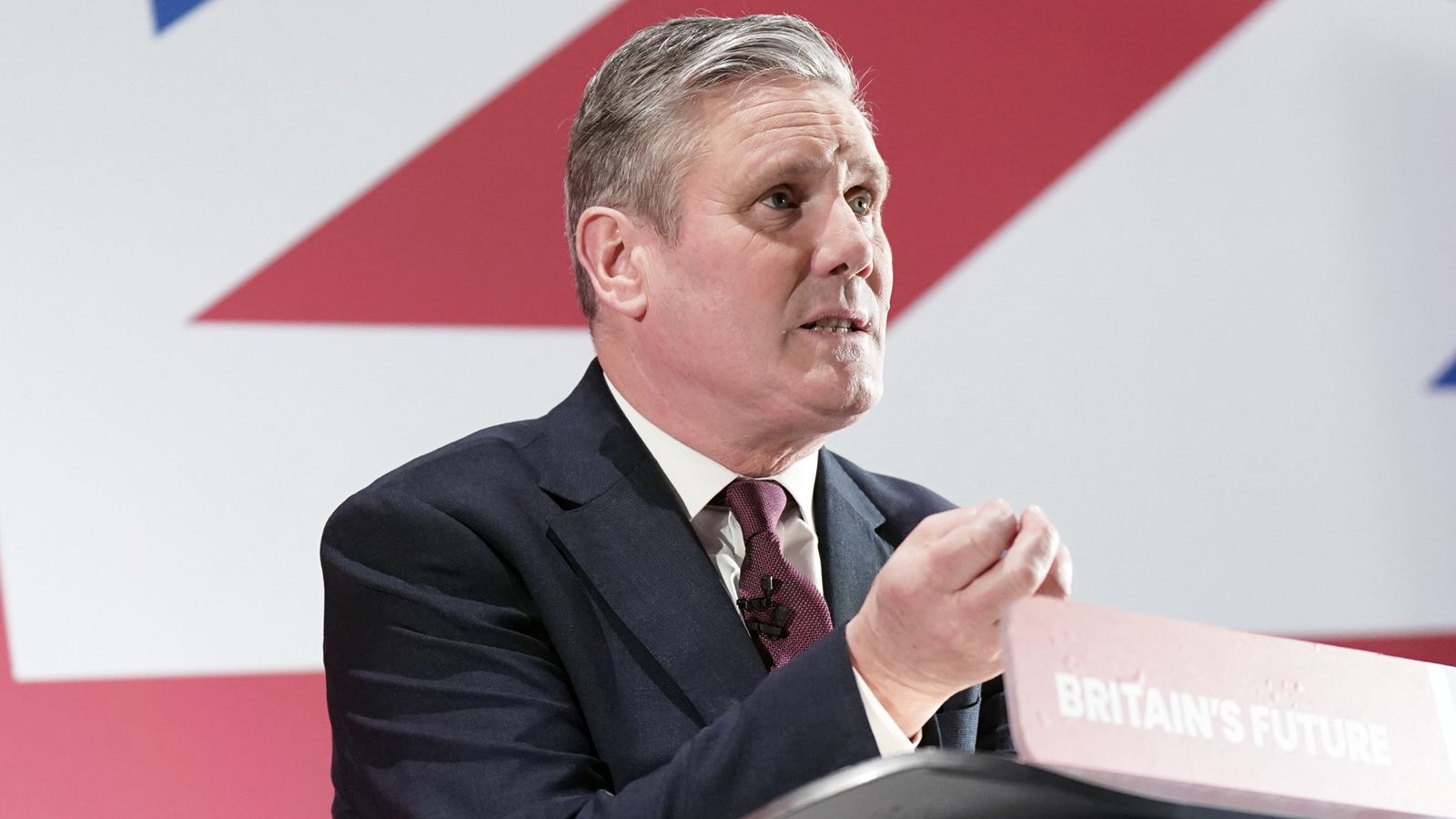Labour has finally confirmed it is ditching a flagship pledge to spend £28bn-a-year on green investments if it wins the next general election.
The party says it will now spend just £23.7bn on environmental schemes over the course of its first term in office – equivalent to just under £5bn a year.
However, Labour insists its commitment to becoming a clean superpower by 2030 remains unchanged and the reduced funding will still meet existing promises made under the original green prosperity plan.
These include:
• The launch of Great British Energy – a publicly-owned green energy company
• A National Wealth Fund to invest in British industries such as electric vehicle production
• A warm homes plan to insulate millions of homes over a decade
Politics latest: We must speak out over ‘frightening’ Trump plans, warns ex-PM
Rishi Sunak should apologise for transgender jibe, Gordon Brown tells Sky News
Sunak declines to apologise for transgender jibe despite calls from Brianna Ghey’s family
• A British Jobs Bonus to provide capital grants to incentivise companies developing clean technologies to invest in regional areas
• Reforming the planning system to accelerate energy projects like onshore windfarms
• Making the UK the green finance capital of the world with mandatory 1.5C-aligned transition plans for major companies and financial institutions.
It is understood that when the party had announced the £28bn figure, it had not come up with ways to spend that sum – and it now believes the aims can still be met by spending less.
However, the warm home scheme will face the biggest cut – it was going to cost £6bn a year, and will now cost £6.6bn over five years.
Labour says this will allow it to insulate five million of the UK’s 16 million homes below an EPC rating of C over the course of the first parliament. It said this is a slower rollout than it had originally hoped, but its aim remains to upgrade every home below an EPC of C by 2035.
Please use Chrome browser for a more accessible video player
The spending U-turn comes after months of speculation about the policy – which aims to kickstart the UK’s transition to a low-carbon economy, meet climate targets and reduce energy bills.
The new plan will be funded half by borrowing, and half by re-purposing and extending the government’s windfall tax on the profits of oil and gas giants.
This currently stands at 75%, but Labour says it will raise it to 78%, the same rate as Norway, while closing what it calls a “loophole” that gives companies tax breaks if they invest in Britain.
Previously, the party had pledged to borrow the whole sum to fund the investments, but this has repeatedly been used by the Conservatives to attack Labour’s fiscal credibility.
Be the first to get Breaking News
Install the Sky News app for free
Labour first made the pledge to spend £28bn-a-year on environmental schemes during its party conference in 2021, with Rachel Reeves promising to be “Britain’s first green chancellor” if the party wins the next election.
But last year, she adjusted the original plan by saying the annual £28bn spending target would likely be met in the second half of a first parliament, rather than immediately – blaming the climbdown on the “damage” the Conservatives had done to the economy.
The party has since insisted the pledge is subject to its fiscal rules, which include getting debt falling as a percentage of GDP.
Confusion over the future of the policy has grown in recent weeks as some senior figures, including Ms Reeves, refused to refer to the £28bn-a-year figure, while party leader Sir Keir continued to do so as recently as Tuesday.






